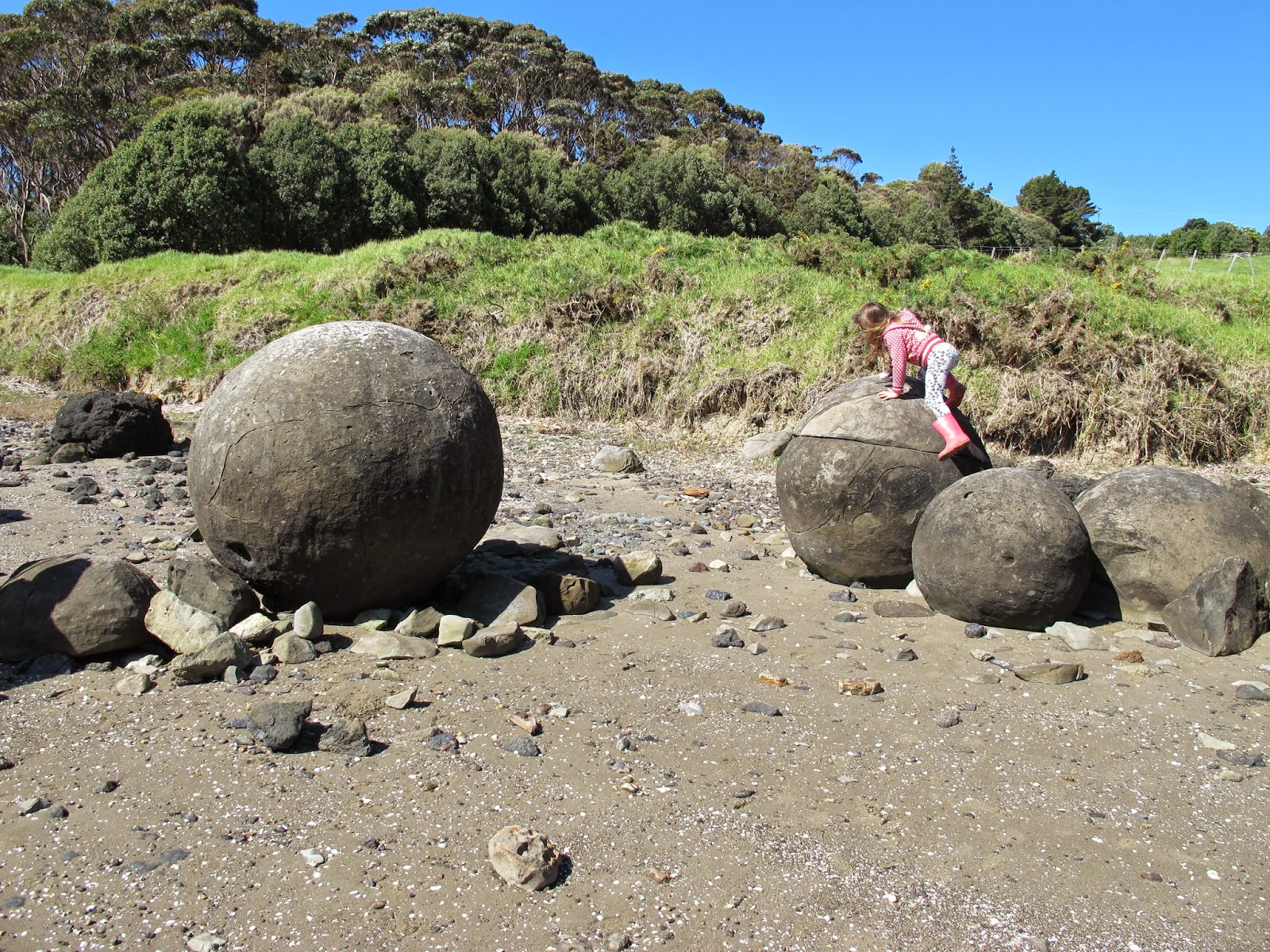Boles, J.R., C.A. Landis, and P. Dale, 1985, The Moeraki Boulders; anatomy of some septarian concretions:, Journal of Sedimentary Petrology. v. 55, n. 3, pp. 398–406.
Hayward, B.W. TREASURED SPHERES - PROTECTING NEW ZEALAND’S HERITAGE OF SPHERICAL CONCRETIONS. Geoscience Society of New Zealand 12: 24-30.
Kastner, Miriam (1999). "Oceanic minerals: Their origin, nature of their environment, and significance". Proc. Natl. Acad. Sci. U.S.A. 96 (7): 3380–7
Moeraki Boulders website: www.moerakiboulders.com
Rust, S. 2022 Report on fossil marine reptile remains (Mosasauridae?) from Koutu Boulders, Hokianga, Northland. Geocene issue 30, p14-19, August 2022 (Auckland Geoclub magazine).
Rust, S. 2014, Late Cretaceous shark vertebrae (Chondrichthyes) from Koutu Boulders, Hokianga, Northland. p 2-4 in Geocene 11; accessed from www.gsnz.org.nz/information/auckland-i-46.html#mag or you can google the title and download this freely from Researchgate.
Rust, S., Lee, D.E., Conran, J.G., Hayward, B.W., 2019. An enigmatic concretion resembling a giant puzzling palm-like fruit from Northland. Geoscience Society of New Zealand Newsletter 28, 23-28
Rust, S. et al. 2019,
An enigmatic concretion resembling a giant puzzling palm-like fruit from Northland.. Available from:
https://www.researchgate.net/publication/334883350_An_enigmatic_concretion_resembling_a_giant_puzzling_palm-like_fruit_from_Northland
Yoshida et al. (2018)
Generalized conditions of spherical carbonate concretion formation around decaying organic matter during early diagenesis.
Scientific Reports volume 8, Article number:
6308 (
2018)
 |
| Watercolour painting by D. Yanakopulos, Moirai Studio. |









